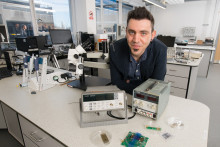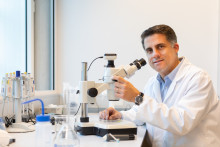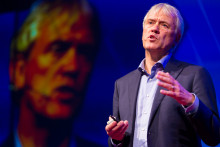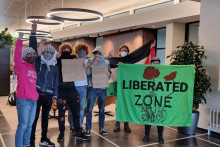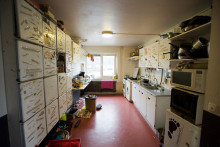Being named as engineer of the week, what does this mean to you as a scientist?
Canyelles Pericas: ‘It brings a lot of visibility and recognition for my work. I’m a naturally shy person, but it helps if people know what I’m up to. It’s nice to be acknowledged for my research and it has helped me to reconnect with a lot of people from my network. We have to wait and see how much it will bring in the long run, but I think it’s important to engage with the general public and explain what you do in language that everyone understands. As scientists we are often paid from public funds and it’s important to show what we do with the funding.’
Why do you think you were selected by IEEE?
‘An engineer of the week should be an IEEE member with a variety of backgrounds and expertise. I’m very multidisciplinary in my work. I focus a lot on tech transfer in between academia and industry, I have done work in both fields, and I think IEEE appreciates that.’
Institute of Electrical and Electronics Engineers
The Institute of Electrical and Electronics Engineers (IEEE) is the world's largest association of technical professionals with more than more than 396,000 members in over 160 countries around the world. Its objectives are the educational and technical advancement of electrical and electronic engineering, telecommunications, computer engineering and similar disciplines.
What are your fields of expertise? What is your research all about?
‘Nanotechnology. There are two main areas I work in: clinical translation, helping doctors provide better therapies for patients, and the so called industry 4.0, providing advanced sensors for a variety of industries. I’m currently working on microfluidic flow composition for medical and industrial applications. More specifically, I’m aiming to provide sensors for better measurements of fat content in milk products. We’d like to provide continuous measuring of fat content the dairy industry, because this value shows the quality of milk. This knowledge could also have health care applications. It could be applied to human milk and lactation. We could better analyze how babies are fed and make better formulas, for example. I’m also part of a Pioneers in Health Care project on how to better treat diabetic foot.’
What is your ultimate goal as a researcher?
‘To align the space between industry and academia. I enjoy working at the university and I’m thankful to MESA+ for their support in exploring my potential. I want to bridge the gap no matter on which side I end up. Ultimately, I want to work on technologies that can be applied fast and be of use to people.’


